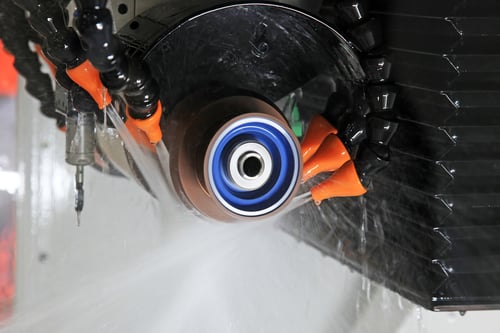Grinding wheels are indispensable in machining operations, but common mistakes can compromise their performance. Whether you're a machinist aiming for precise results or a novice exploring the world of grinding, understanding and avoiding these pitfalls is crucial. Here's a detailed look at the top seven mistakes to avoid when using grinding wheels.

1. Incorrect Wheel Selection
Choosing the wrong wheel for the material or application is a frequent cause of failure. Factors like abrasive grains (e.g., aluminum oxide or superabrasives like CBN), grit size, and bond type directly impact wheel performance and lifespan. For example:
-
Metalworking often benefits from vitrified or resin bond wheels.
-
Carbide grinding requires diamond wheels, while ferrous metals are best paired with CBN.
💡 Tip: Consult with an application engineer to match the wheel to your grinding machine, desired surface finish, and workpiece material.
2. Improper Wheel Speed
Operating at incorrect wheel speeds can lead to glazing, overheating, and even breakage. For instance, running a wheel slower than the recommended surface feet per minute (SFPM) results in lower efficiency and poor surface finish, while excessively high speeds can lead to safety hazards.
💡 Tip: Always verify the RPM of your grinding machine matches the wheel's specifications. Adjust speed according to the wheel's material and grit size.
3. Neglecting Coolant and Lubrication
Coolant plays a vital role in dissipating heat, reducing friction, and improving surface finish. Poor placement or the wrong type of coolant can cause overheating, discoloration, and accelerated wheel wear.
💡 Tip: Ensure coolant nozzles are correctly positioned and use a coolant compatible with the material being ground. For instance, water-based coolants are ideal for general grinding, while oil-based coolants work better for intricate operations.
4. Ignoring Wheel Dressing
Grinding wheels can become loaded with material or glaze over time, leading to reduced cutting efficiency. Regular dressing restores the wheel surface and sharpens abrasive grains.
💡 Tip: Use a proper dressing tool to match the wheel's bond and grit. For example, diamond dressing sticks are effective for harder bonds.
5. Incorrect Feed Rate and Grinding Pressure
Pushing the grinding process too hard can lead to gouging, while insufficient pressure results in glazing and poor material removal. Both scenarios cause uneven wear and reduce wheel life.
💡 Tip: Adjust the feed rate to suit the material and operation. For roughing, use a coarser grit with higher feed rates, while finer grit is better for finishing at lower pressures.
6. Inadequate Storage and Handling
How grinding wheels are stored and handled can significantly affect their lifespan and performance. Exposure to moisture, improper stacking, or rough handling can weaken the bond and cause breakage during operations.
💡 Tip: Store wheels in a dry, temperature-controlled environment, keeping them upright on shelves or racks. Inspect wheels for cracks or damage before use.
7. Contaminants and Poor Maintenance
Contaminants like oil, dirt, or metal particles on the workpiece or wheel can lead to uneven wear, poor surface finish, and discoloration.
💡 Tip: Keep the grinding area clean and inspect wheels regularly for chips, cracks, or other damage. Replace worn or damaged wheels immediately to avoid breakage.
![]()
Subscribe to email updates
Subscribe to our blog to get the latest updates from the experts on Grinding Wheels! You can easily unsubscribe at any time




